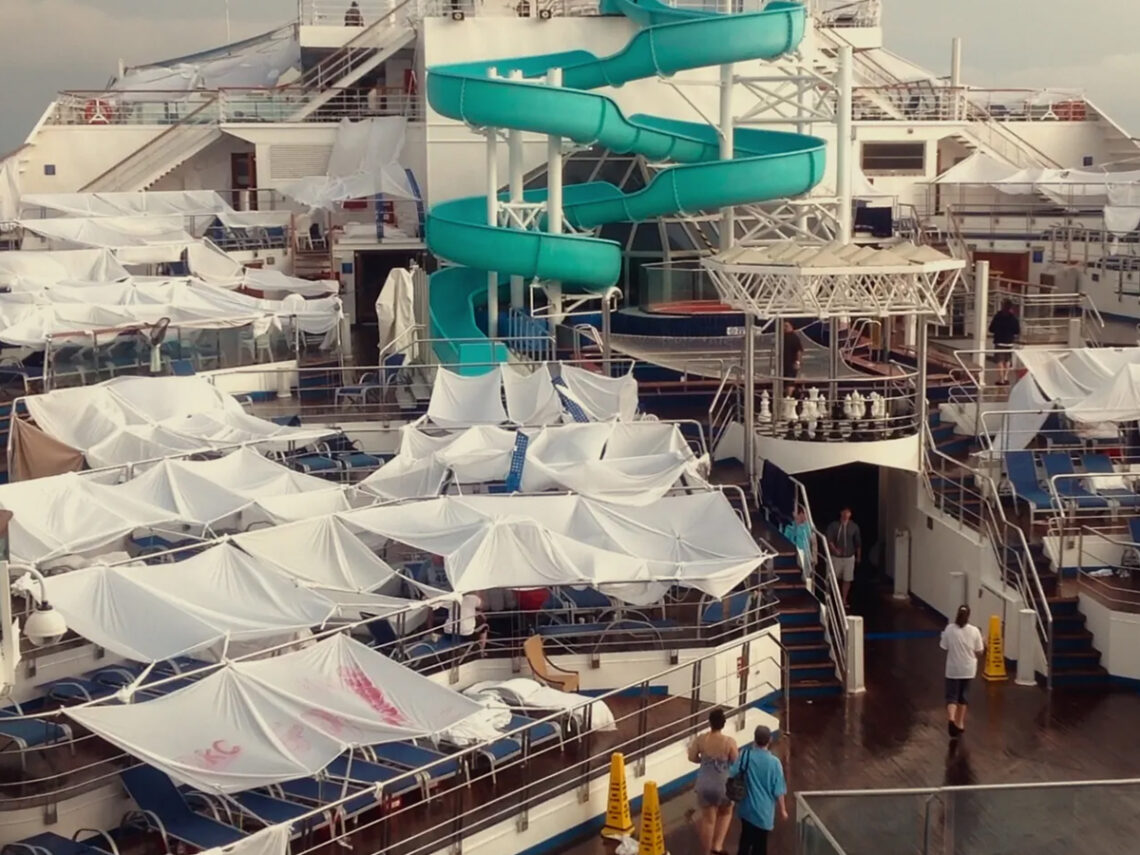
The true story behind ‘Trainwreck: Poop cruise”
It is the kind of story that sounds made up. A cruise ship, a fire, thousands of stranded passengers, and a situation so surreal that even the headlines could not quite do it justice. But Trainwreck: Poop Cruise, the new Netflix documentary episode, is not fiction. It is a very real, very human disaster that unfolded in 2013, and it is now being retold with all the mess, emotion, and absurdity that came with it.
The Carnival Triumph set sail from Galveston, Texas, on what was supposed to be a regular four-day cruise to Mexico. For many of the 4,200 people on board, it was a chance to escape real life for a while. Warm weather, unlimited food, sea views: it had all the makings of a dream vacation. That illusion shattered quickly when, just two days in, an engine fire knocked out the ship’s power. Suddenly, there was no electricity. No running water. No air conditioning. No toilets. The cruise, now drifting in the Gulf of Mexico, became a nightmare.
What followed over the next five days is the focus of Trainwreck: Poop Cruise. The documentary weaves together passenger videos, news coverage, and personal accounts to take viewers inside the chaos. With no plumbing, raw sewage began flooding hallways. Toilets overflowed. People were told to use red biohazard bags and deposit them in bins. The heat was unbearable, the smell worse, and the anxiety rising by the hour. It was not long before the ship earned its now-infamous nickname: the poop cruise.
But the episode does not just focus on the gross-out details. What makes it compelling is how it captures the emotional landscape of being stuck in that limbo. Passengers recall moments of fear, exhaustion, and helplessness, but also strange flashes of humanity. There were birthday celebrations on the upper deck, passengers forming makeshift communities, and even some laughter. One woman describes how people shared snacks and tissues. Another remembers singing to pass the time. Misery, it seems, became a shared experience.
The ship was eventually towed to Mobile, Alabama, after five long days at sea. By the time it reached port, the media had already descended. The footage of passengers waving from the decks, wrapped in Carnival-logoed bathrobes and carrying their makeshift supplies, became a defining image of corporate disaster. Carnival later claimed the incident was an unfortunate accident, but investigations revealed it was not entirely unforeseeable. The ship had known generator issues and fuel line problems. That led to a broader conversation about cruise safety and emergency protocols, and Carnival invested millions in ship upgrades and training in the aftermath.
Trainwreck: Poop Cruise does not let viewers forget who was at the centre of this mess: the passengers. Their voices drive the narrative. Their frustration, humour, and resilience are what make the episode more than just a retelling of a tabloid headline. The documentary is not trying to make fun of what happened. It is trying to understand how things fell apart, how people reacted, and what it says about the cruise industry.
This is not a flashy disaster movie. There are no heroes, no villains in capes. Just people. Some angry, some patient, all of them stuck in a situation they never saw coming. And that is what makes the story worth telling. Because sometimes, the most gripping moments are not about explosions or plot twists. They are about what happens when everyday life takes a turn no one planned for, and you are forced to find your way through it with a soggy sandwich in one hand and a biohazard bag in the other.